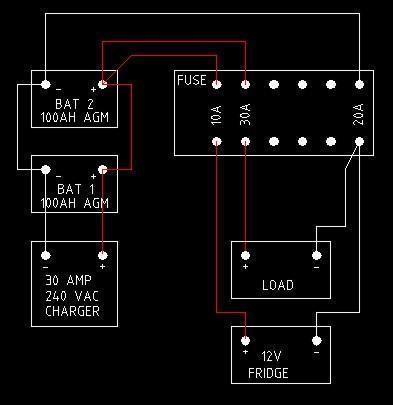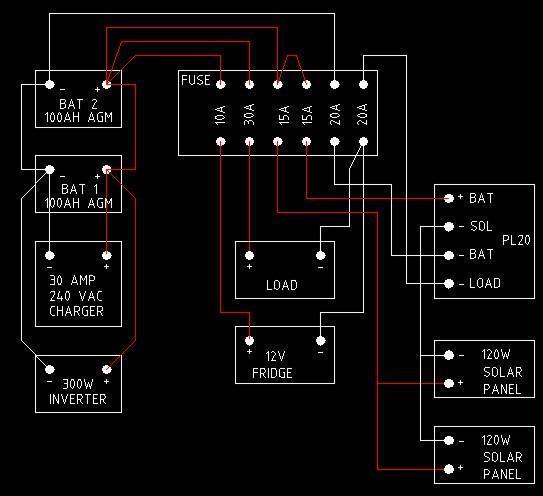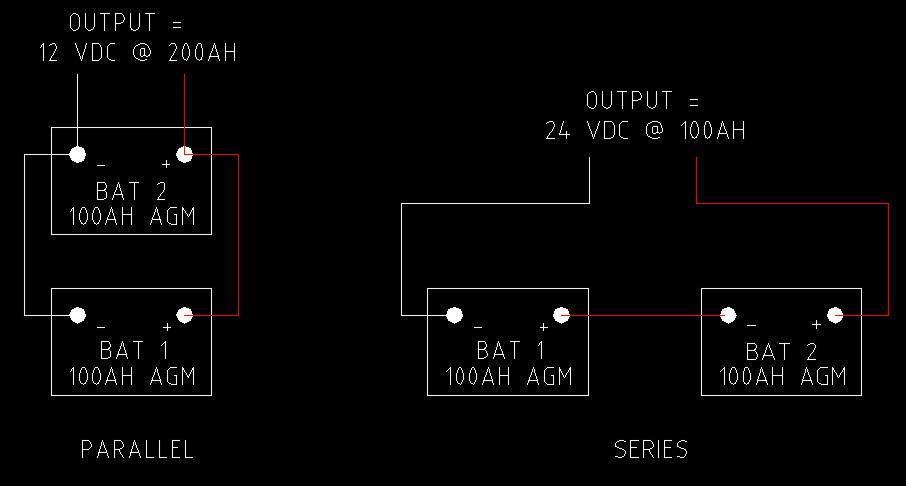OK, here's my first example of bush power design, it is not the only way to do this, it is one way. This one is for a caravan, (the next lot of posts will be for 4x4/tent camping.) I am assuming the following equipment;
Battery = 100AH AGM Deep Cycle
Charger = 3 Stage smart charger, configured to charge an AGM @30amps
Solar Panel = 120W Monocrystalline
Inverter = 300W Pure Sine Wave with internal fusing
Solar Controller = Plasmatronics PL20, 20Amp
12v to 12v charger = Redarc BCDC1220
Fridge = 90 litre Invitrifigo compressor
Load = the rest of the vans 12 volt systems to be distributed.
The PLS2, WY cable and shunt are required so that the PL20 which is 20 amp, can monitor the Inverter which will draw up to 27 amps, I'll explain why later.
There will be 6 images as I build up the system.
The first being a basic battery, charger, load, fridge and fuse system.












